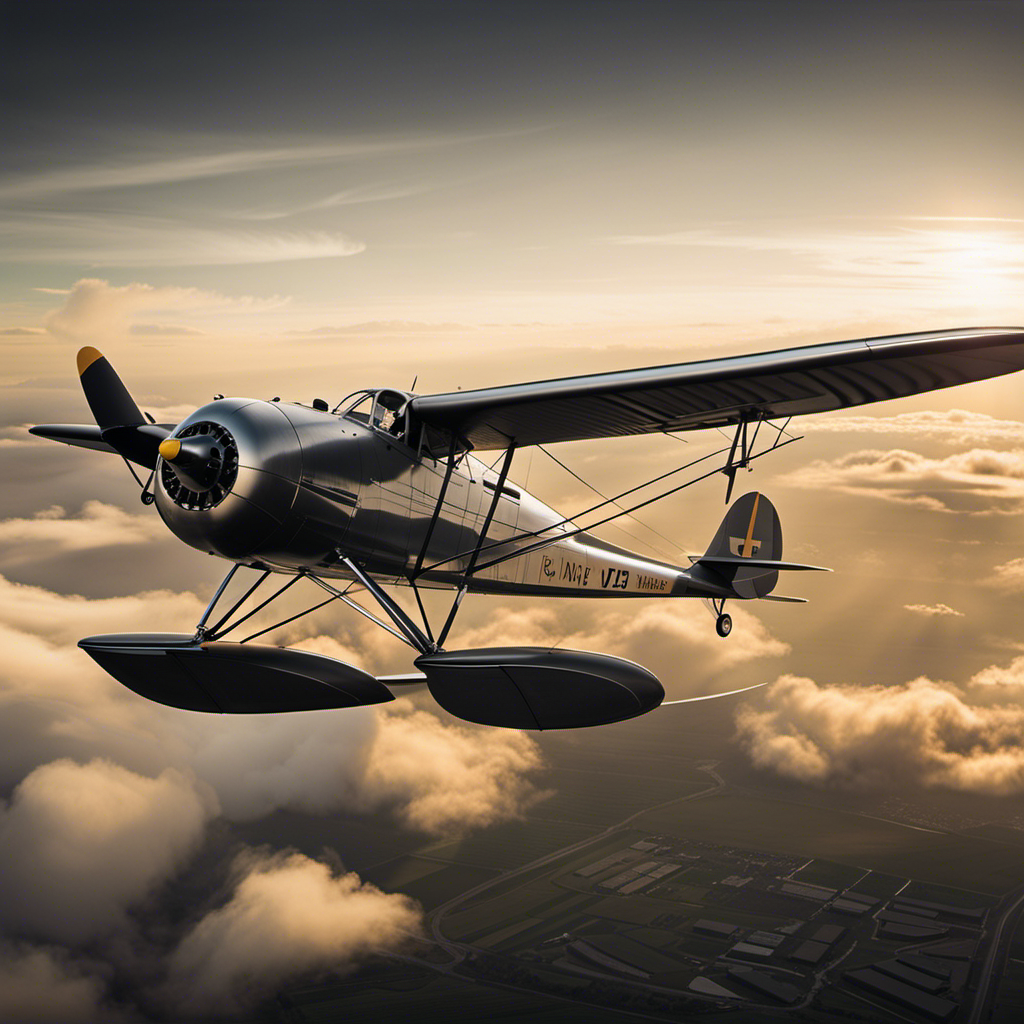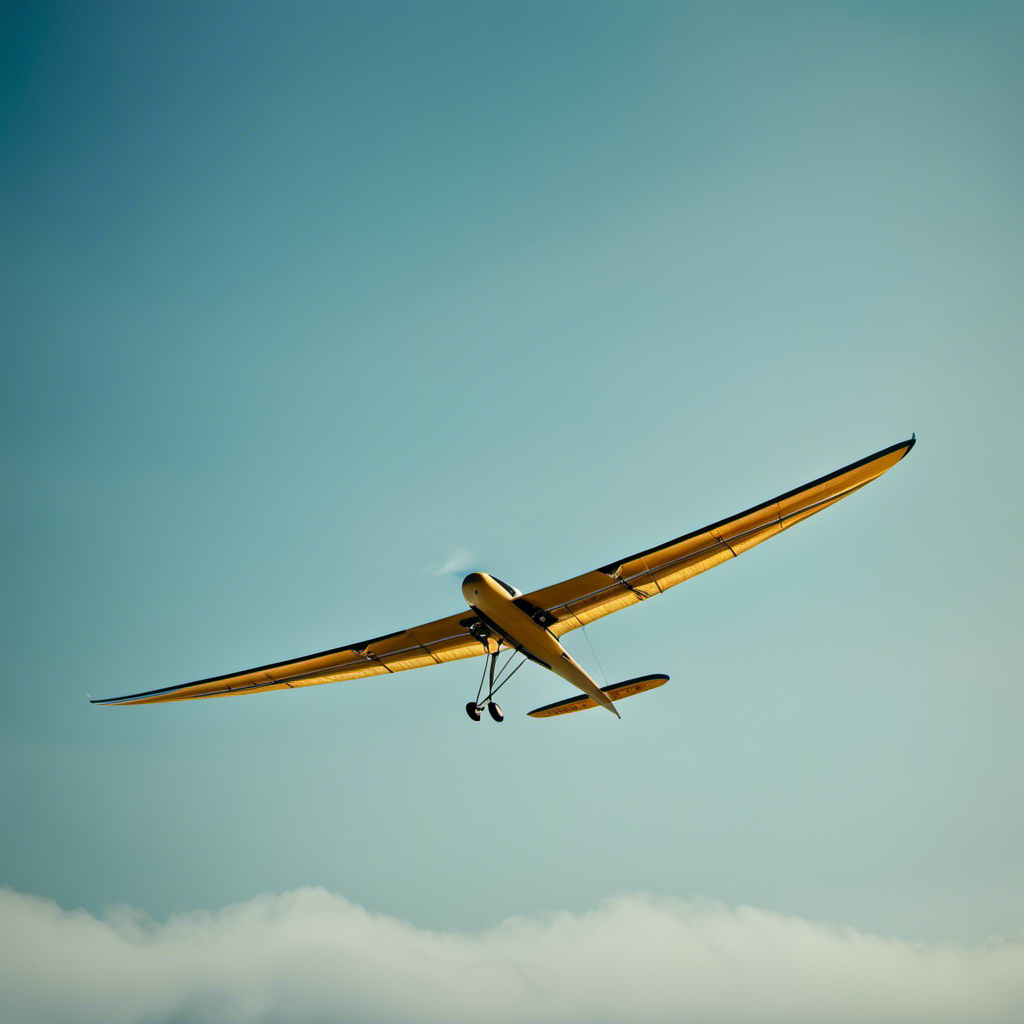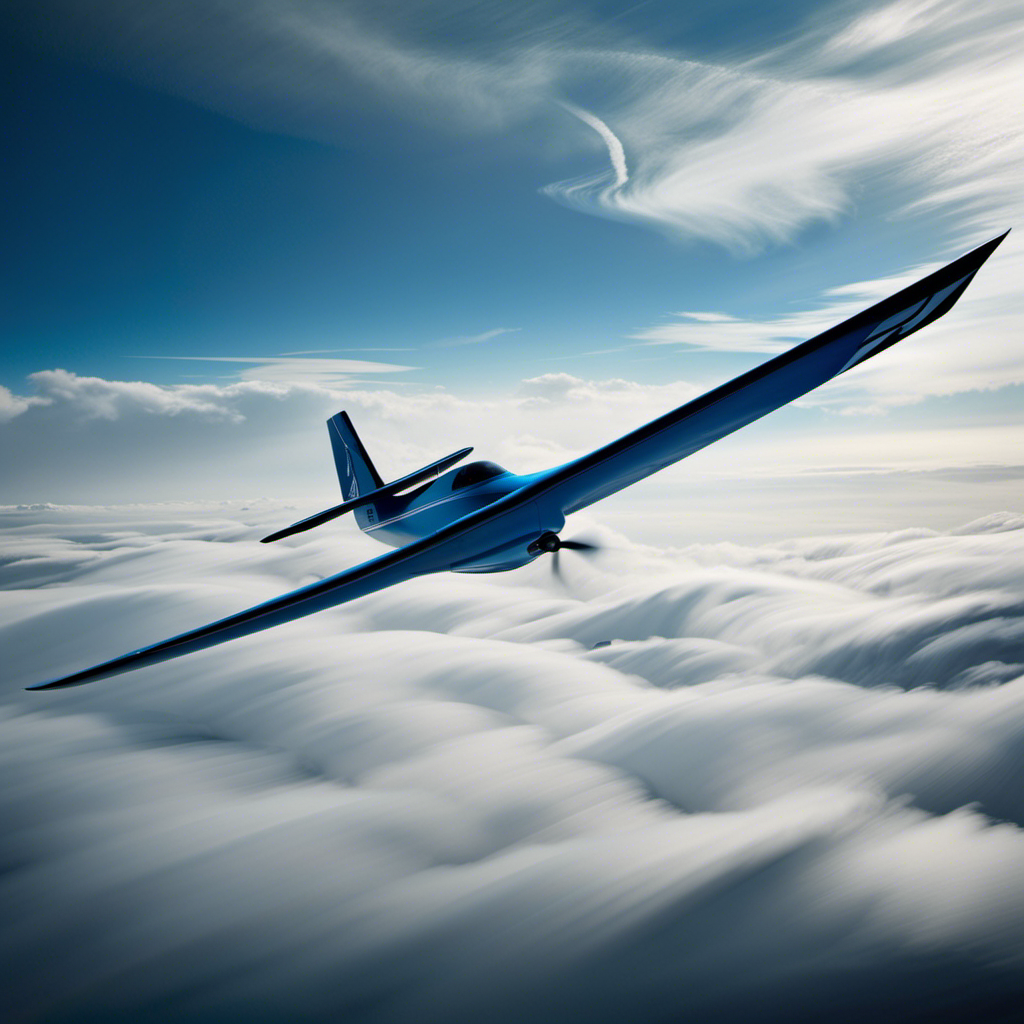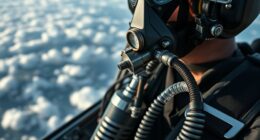As an avid adventure enthusiast, I often find myself pondering the safety of hang gliding versus paragliding. This question sparks my curiosity and motivates me to delve deeper into the exhilarating world of these airborne sports.
With my research, I aim to provide an objective analysis of the risk factors, safety measures, and accident statistics associated with both activities.
By shedding light on these aspects, I hope to help you make an informed decision when choosing between hang gliding and paragliding.
Key Takeaways
- Regular inspection and maintenance of equipment is crucial for safety in both hang gliding and paragliding.
- Understanding and assessing weather conditions is essential for safe flying in both activities.
- Pilot skill, experience, and ongoing training play a significant role in accident prevention.
- Proper equipment usage and regular maintenance are important factors in reducing risks in both hang gliding and paragliding.
Understanding the Basics of Hang Gliding
If you’re new to hang gliding, you’ll want to understand the basics before taking to the skies. Hang gliding is an exhilarating sport that requires careful equipment maintenance and an understanding of weather conditions.
When it comes to equipment maintenance, it is crucial to regularly inspect and maintain your hang glider to ensure its safety and performance. This includes checking the wires, frame, and fabric for any signs of wear or damage. It’s also important to keep your hang glider clean and dry, as moisture can weaken the materials over time.
Additionally, understanding weather conditions is vital for a safe hang gliding experience. Before flying, it’s important to check the weather forecast and be aware of factors such as wind speed, direction, and turbulence. It’s also important to have a thorough understanding of how different weather conditions can affect your flight, such as thermals and wind gusts.
By properly maintaining your equipment and having a good understanding of weather conditions, you can ensure a safer hang gliding experience.
Transitioning to the next section, understanding the basics of paragliding involves learning different techniques and maneuvers.
Understanding the Basics of Paragliding
When it comes to paragliding, it’s important to have the right equipment and techniques in order to ensure a safe and enjoyable experience.
The type of paragliding equipment used can greatly impact the overall performance and safety of the flight.
Additionally, proper training and certification are essential for mastering the necessary skills and ensuring that pilots are well-prepared for any potential challenges they may encounter while paragliding.
Equipment and Techniques
Hang gliding and paragliding both require different types of equipment and techniques. When it comes to equipment maintenance, it is crucial to regularly inspect and service your gear to ensure it is in prime condition. Weather conditions play a significant role in determining whether it is safe to fly or not. Here are four key factors to consider:
- Wing performance: The design of the wing and its ability to handle various weather conditions.
- Harness and safety gear: The quality and functionality of your harness and safety equipment.
- Instruments: The use of instruments such as variometers and altimeters to monitor altitude and airspeed.
- Reserve parachute: Having a reliable reserve parachute is essential in case of emergencies.
Understanding the importance of equipment maintenance and being knowledgeable about weather conditions will help ensure a safe flying experience.
Now, let’s delve into the next section: training and certification.
Training and Certification
To become a certified pilot, you must complete a training program that includes theoretical knowledge and practical flying exercises. The benefits of professional training cannot be overstated. It provides you with the necessary skills and knowledge to safely operate an aircraft.
Theoretical knowledge covers important topics such as aerodynamics, weather patterns, and navigation, while practical exercises allow you to apply what you have learned in real-life flying scenarios.
Ongoing certification is also of utmost importance. It ensures that pilots stay up-to-date with the latest advancements in aviation and continue to meet the required safety standards. By regularly renewing their certification, pilots demonstrate their commitment to maintaining their skills and knowledge.
Now, let’s transition into assessing the risk factors of hang gliding, where we will explore the potential dangers and precautions that need to be taken.
Assessing the Risk Factors of Hang Gliding
Assessing the risk factors of paragliding is also crucial in determining its safety compared to hang gliding. Similar to hang gliding, several key factors need to be considered when conducting a risk assessment and comparative analysis of paragliding:
-
Equipment Reliability: Just like hang gliding, the reliability of the paragliding equipment is essential for the safety of the pilot. Malfunctions or failures can result in serious accidents.
-
Weather Conditions: Paragliding is also heavily dependent on weather conditions. Unfavorable weather, such as strong winds or sudden weather changes, can increase the risk of accidents.
-
Pilot Skill and Experience: The skill and experience of the paraglider pilot are significant factors in mitigating risks. Proper training and experience can contribute to higher safety levels.
-
Takeoff and Landing Sites: The choice of takeoff and landing sites in paragliding can greatly impact safety. Factors such as accessibility, terrain, and potential obstacles should be carefully assessed.
Understanding these risk factors allows us to make an informed analysis of the safety of paragliding compared to hang gliding.
Assessing the Risk Factors of Paragliding
Considering the risk factors involved, you should take into account the reliability of the equipment used for paragliding. Paragliding, like any other adventure sport, carries inherent risks that need to be carefully assessed. When assessing risk factors in paragliding, it is crucial to consider the safety precautions taken by the pilot and the quality of the equipment being used.
One of the primary risk factors in paragliding is equipment failure. This can occur due to various reasons such as poor maintenance, manufacturing defects, or wear and tear. Assessing the reliability of the equipment before each flight is essential to minimize the risk of equipment failure. Regular inspections, proper maintenance, and adherence to manufacturer guidelines are crucial in ensuring the safety of the pilot.
Another risk factor in paragliding is weather conditions. Assessing the weather forecast and understanding its impact on paragliding is vital. Strong winds, turbulence, and sudden weather changes can pose significant risks to the pilot. It is essential to assess these factors before taking off to minimize the chances of accidents or mishaps.
In conclusion, assessing risk factors and taking necessary safety precautions are crucial in paragliding. By considering the reliability of the equipment and monitoring weather conditions, pilots can mitigate potential risks.
Transitioning into the subsequent section about safety measures in hang gliding, it is important to understand that these precautions are just as important in hang gliding as well.
Safety Measures in Hang Gliding
When it comes to ensuring safety in hang gliding, there are several key points to consider.
Firstly, pre-flight inspections and checks are crucial in identifying any potential issues or malfunctions with the equipment before taking off.
Secondly, having well-defined emergency procedures and safety protocols in place is essential for handling any unforeseen circumstances or emergencies during flight.
Lastly, continuous training and skill development are important for pilots to enhance their flying abilities and stay updated with the latest safety practices.
Pre-flight Inspections and Checks
Before taking off, it’s important to do a thorough pre-flight inspection and check for any potential issues. This is a crucial step in ensuring the safety of both the pilot and the aircraft. Here are three common pre-flight checklist items that are of utmost importance:
-
Check the wings and control surfaces for any signs of damage or wear. This includes inspecting the fabric, cables, and hardware for any signs of fraying, corrosion, or loose connections.
-
Inspect the harness and straps for any signs of wear or damage. This includes checking the buckles, D-rings, and stitching for any signs of weakness or deterioration.
-
Verify that all the instruments and equipment are in proper working order. This includes checking the altimeter, variometer, radio, and GPS for accuracy and functionality.
By diligently performing these pre-flight checks, pilots can identify and address any potential issues before taking to the skies. This ensures a safe and smooth flying experience.
Transitioning into the subsequent section about emergency procedures and safety protocols, it is essential to be well-prepared for any unforeseen circumstances that may arise during the flight.
Emergency Procedures and Safety Protocols
Transition:
Moving on from pre-flight inspections and checks, it is crucial to discuss emergency procedures and safety protocols in hang gliding and paragliding. In the event of an unexpected situation, such as equipment failure or adverse weather conditions, proper emergency response can be a lifesaver. Pilots must be well-versed in emergency landing techniques and have a clear understanding of safety protocols to ensure their own well-being and that of others.
To provide a comprehensive overview, let’s take a look at the following table outlining some key emergency procedures and safety protocols:
| Emergency Response | Hang Gliding | Paragliding |
|---|---|---|
| Equipment Failure | Deploy reserve | Deploy reserve |
| parachute | parachute | |
| Weather Conditions | Seek landing | Seek landing |
| opportunities | opportunities | |
| Collisions | Perform emergency | Perform emergency |
| maneuvers | maneuvers |
With these emergency procedures and safety protocols in place, pilots can mitigate potential risks and ensure a higher level of safety. However, it is important to note that continuous training and skill development play a crucial role in maintaining safety standards.
Continuous Training and Skill Development
Pilots must continually train and develop their skills to ensure a higher level of safety in both hang gliding and paragliding. Continuous training and skill development are crucial in these sports, as they involve navigating through unpredictable weather conditions and managing potential risks.
Here are four key aspects of continuous training and skill development:
-
Flight maneuvers: Pilots must regularly practice various flight maneuvers, such as turns, stalls, and emergency landings, to enhance their control over the glider.
-
Weather analysis: Understanding weather patterns is essential for safe flying. Pilots need to learn how to interpret weather forecasts and make informed decisions about when and where to fly.
-
Equipment maintenance: Regular maintenance of equipment is vital to ensure its proper functioning. Pilots should learn how to inspect, repair, and maintain their gliders and other gear.
-
Safety drills: Pilots must practice emergency procedures, such as deploying reserve parachutes or dealing with equipment malfunctions, to be prepared for unforeseen situations.
Safety Measures in Paragliding
To ensure your safety while paragliding, it’s crucial to follow proper safety measures. One of the most important safety measures is regular equipment inspection. Before taking off, paragliders should thoroughly check their wing, harness, lines, and reserve parachute to ensure they are in good working condition. It’s also essential to wear appropriate safety gear, including a certified helmet, sturdy footwear, and protective clothing. Additionally, pilots should be well-informed about weather conditions and choose suitable flying sites to avoid potential hazards. They should also undergo proper training and acquire the necessary skills to handle emergency situations effectively.
By following these safety measures, paragliders can significantly reduce the risk of accidents and ensure a safe flying experience.
Transitioning to the next section on accident statistics and analysis in hang gliding, it’s important to examine the data to gain a comprehensive understanding of the safety aspects in different types of flying activities.
Accident Statistics and Analysis in Hang Gliding
Accidents in hang gliding can be analyzed through the examination of relevant statistics. By studying the data, we can gain valuable insights into accident prevention and the role of pilot experience.
Here are some key points to consider:
-
Pilot experience plays a crucial role in accident prevention. Experienced pilots are more likely to make better decisions, assess risks accurately, and react effectively in emergency situations.
-
The use of proper safety equipment, such as helmets and harnesses, greatly reduces the severity of injuries in the event of an accident.
-
Weather conditions are an important factor to consider. Understanding and respecting the limits of weather conditions can help prevent accidents caused by unexpected turbulence or wind changes.
-
Regular maintenance and inspections of hang gliding equipment are essential to ensure its reliability and functionality.
By analyzing accident statistics and considering these factors, we can work towards improving hang gliding safety.
Now, let’s transition into the subsequent section about accident statistics and analysis in paragliding.
Accident Statistics and Analysis in Paragliding
Understanding the importance of weather conditions and proper equipment usage can greatly contribute to a safer experience in paragliding. Accident prevention is a crucial aspect of this sport, and it requires a thorough analysis of pilot errors. By studying accident statistics and analyzing the factors leading to accidents, we can identify areas of improvement and develop strategies to mitigate risks.
In order to provide a comprehensive understanding of accident patterns in paragliding, I have compiled the following table:
| Accident Cause | Frequency |
|---|---|
| Pilot Error | 60% |
| Equipment Failure | 20% |
| Weather Conditions | 15% |
From the table, it is evident that pilot error is the leading cause of accidents, accounting for 60% of the cases. This highlights the importance of proper training and education for pilots, as well as the need for ongoing skill development.
To effectively prevent accidents, it is essential to analyze the different aspects of pilot error. This includes assessing decision-making abilities, situational awareness, and adherence to safety protocols. By identifying common errors and addressing them through targeted training programs, we can significantly reduce the occurrence of accidents in paragliding.
Transitioning into the subsequent section about expert opinions and recommendations, it is crucial to consider the insights from experienced paragliding professionals who can provide valuable guidance on accident prevention strategies.
Expert Opinions and Recommendations
By listening to experienced professionals in the field, you can gain valuable insights and recommendations on how to prevent accidents in paragliding. Expert opinions play a crucial role in understanding the safety measures necessary for this exhilarating sport.
Based on the advice of paragliding experts, here are some safety recommendations to consider:
-
Proper Training: Ensuring you receive thorough and comprehensive training from a certified instructor is essential. This will equip you with the necessary knowledge and skills to handle various situations effectively.
-
Equipment Maintenance: Regularly inspecting and maintaining your paragliding equipment is crucial to ensure its proper functioning. This includes checking the lines, harness, and wing, as well as replacing any damaged or worn-out parts.
-
Weather Conditions: Paying close attention to weather forecasts and understanding the impact of wind, thermals, and other atmospheric conditions is vital. Avoiding flying in adverse weather conditions can significantly reduce the risk of accidents.
-
Risk Assessment: Conducting a thorough risk assessment before every flight is essential. Evaluating factors such as wind strength, turbulence, and the terrain will help you make informed decisions about whether it is safe to fly.
Making an Informed Decision
When deciding whether to participate in paragliding, it’s important to carefully consider all the relevant factors.
One of the main factors to weigh is the pros and cons of the activity. On the pro side, paragliding offers a thrilling and exhilarating experience, allowing you to soar through the sky and enjoy breathtaking views. It also provides a sense of freedom and a unique perspective of the world.
However, it’s crucial to understand the potential risks involved as well. Paragliding is an extreme sport, and accidents can happen. There is a risk of equipment failure, adverse weather conditions, and human error. It’s essential to choose a reputable and experienced paragliding school or instructor, as proper training and equipment maintenance can help mitigate these risks. Additionally, being aware of your physical limitations and adhering to safety guidelines is crucial.
Overall, while paragliding can be an incredible experience, it’s essential to weigh the pros and cons and understand the potential risks before making an informed decision to participate.
Frequently Asked Questions
Is hang gliding or paragliding more physically demanding?
Paragliding and hang gliding both have physical fitness requirements, but hang gliding tends to be more physically demanding. Training programs are available for both sports to help develop the necessary skills and fitness level.
How long does it take to become proficient in hang gliding or paragliding?
On average, it takes about 6-12 months to become proficient in hang gliding or paragliding. Both sports have their challenges, such as learning techniques and safety concerns, but with proper training programs, these risks can be mitigated.
Are there any age restrictions for participating in hang gliding or paragliding?
There are generally no age restrictions for participating in hang gliding or paragliding. However, safety measures should be taken into account to ensure the well-being of individuals of all ages.
Can hang gliding or paragliding be done in any weather conditions?
Hang gliding and paragliding can be done in various weather conditions, but safety precautions must be taken. It is important to assess wind speed, visibility, and turbulence before flying. Experienced pilots are better equipped to handle challenging weather conditions.
Are there any specific medical conditions that may prevent someone from participating in hang gliding or paragliding?
As an experienced hang glider, I’ve learned that certain medical conditions can restrict participation. Conditions such as heart problems, epilepsy, and uncontrolled high blood pressure may prevent someone from safely engaging in hang gliding or paragliding.
Conclusion
After thoroughly examining the fundamentals, risk factors, safety measures, accident statistics, and expert opinions surrounding hang gliding and paragliding, it becomes evident that both activities possess inherent dangers.
However, it is crucial to acknowledge that these adventurous pursuits offer a unique blend of excitement and thrill. While caution should always be exercised, embracing the exhilaration of flight can be a transformative experience.
So, if you dare to soar among the clouds, remember to prioritize safety and make an informed decision that aligns with your personal risk tolerance.









